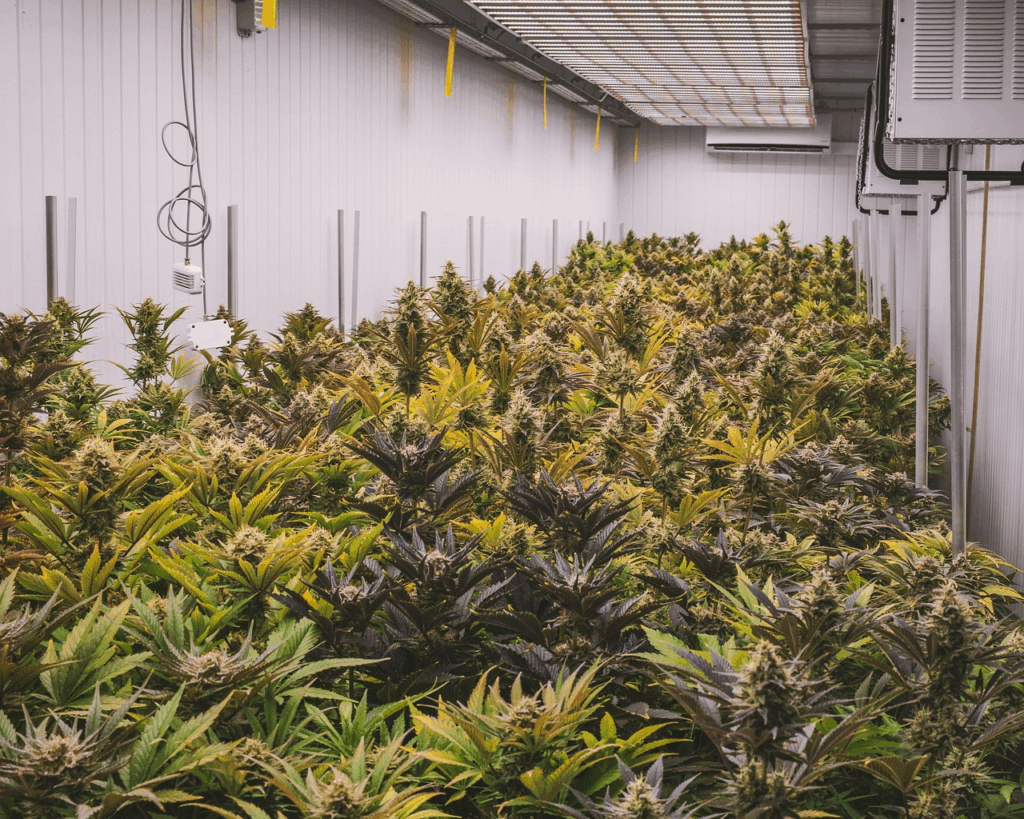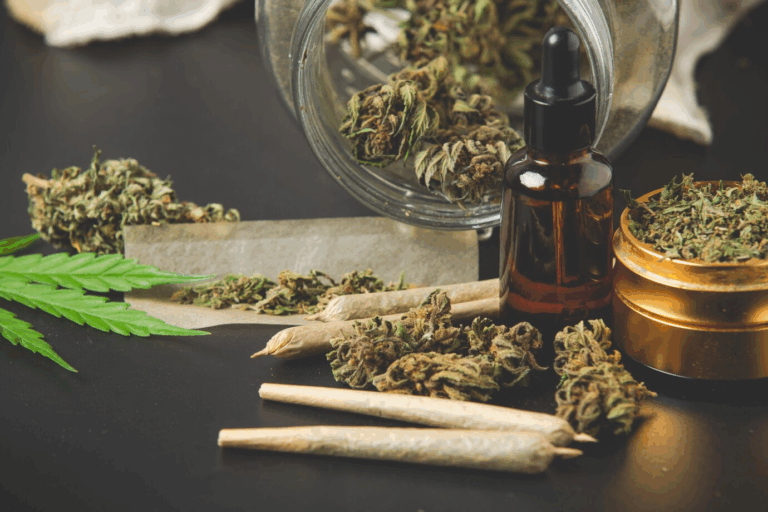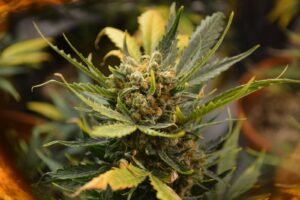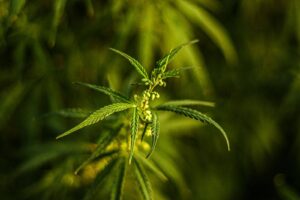Are you curious about how drying impacts the potency of your cannabis? Does weed lose potency during the drying process? Well, yes, much like germination, the drying process plays a crucial role in determining the potency, flavor, and aroma of your cannabis.
Maintaining the health of your crops throughout the growing season is just as important. Proper care and attention to detail during the growth phase can significantly impact both the quality and quantity of your harvest.
Achieving the right drying conditions is very important to preserve the potency and aroma of the final product. To ensure optimal drying, maintaining a controlled environment with proper airflow, humidity, and temperature is a must. Too much heat or a lack of ventilation can cause the plant material to degrade, while too much moisture can lead to mold growth.
And this is why this guide will be helpful for you. In this article, you’ll discover how drying affects potency, how much heat needed for the plant, ventilation requirnment, key techniques to properly dry your cannabis and more.
The Role of Dryness in Cannabis Potency
Cannabis potency means how strong the effects of cannabis are. This strength mainly depends on two key natural chemicals in the plant: THC and CBD. The higher the THC or CBD content in a cannabis plant, the stronger its effects will be.
That’s why growers pay close attention to how they grow, dry, and store the plant to keep its strength and quality at the best level. Maintaining this strength is not just about growing the plant right; it’s also about what happens after harvest. One of the most essential steps is drying.
Let’s explore its importance or role in cannabis potency below.
Understanding Dryness Role & Factors Influencing It?
Drying is a important step in the cannabis cultivation process because it helps preserve the potency, flavor, and overall quality of the plant. After harvesting, cannabis plants contain high levels of moisture, which can cause mold, mildew, or other microbial issues if not removed properly.
Improper drying cannabis can lead to THC degradation, which reduces potency. Several factors during the drying process can influence THC degradation. Here are some of them:
1. Temperature
Temperature is one of the most significant factors that affect the drying process and the preservation of cannabis potency. When cannabis is dried at high temperatures, it speeds up the degradation of cannabinoids, especially THC. Studies have shown that THC begins to degrade at temperatures above 70°F (21°C). The hotter the environment, the more rapid the breakdown of THC into its inactive forms, leading to a weaker and less potent product. This is why it’s essential to maintain a temperature range of around 60-70°F (15-21°C) during drying.
For example, a grower who dries their cannabis at 85°F (29°C) may experience a noticeable drop in THC content compared to a grower who dries at a cooler, more controlled temperature. By keeping temperatures within the ideal range, the plant’s potency is better preserved, and the cannabinoids are able to retain their effects.
2. Light Exposure
Light, especially ultraviolet (UV) light, is a major contributor to the degradation of cannabinoids like THC. When cannabis plants are exposed to light during drying, the UV rays break down the THC molecules, leading to a reduction in potency. In fact, some studies suggest that just a few hours of exposure to intense UV light can cause a significant decrease in THC levels.
To avoid this, cannabis should be dried in a dark or dimly lit environment. For example, many growers use drying rooms with no windows or black-out curtains to prevent any light exposure. Even when cannabis is being stored, it should be kept in dark containers or boxes to protect it from light. The less light exposure, the better the preservation of THC, which directly impacts the overall potency and quality of the cannabis.
3. Air Circulation
Proper airflow is important during drying to prevent the growth of mold, mildew, and other fungi that thrive in damp conditions. However, excessive airflow can increase the rate at which THC degrades. Too much air circulation can cause the surface of the cannabis to dry out too quickly, leading to the loss of volatile compounds such as terpenes (which contribute to the aroma and flavor) and cannabinoids like THC.
An optimal drying environment will have good, balanced airflow enough to prevent mold but not so much that it causes rapid moisture evaporation. For example, a drying room with fans set at a moderate speed is ideal, as this prevents moisture buildup while maintaining the integrity of the cannabinoids. A gentle breeze allows for an even, controlled drying process that preserves potency.
4. Drying Time
The duration of the drying process also plays a essential role in maintaining cannabis potency. Prolonged drying times, whether due to a low humidity environment or inadequate airflow, can cause a greater loss of cannabinoids, particularly THC. The longer the cannabis is exposed to drying conditions, the more time the THC has to degrade. This is why growers typically aim for a drying time of 7-10 days, depending on the size and density of the buds, ensuring that the cannabis reaches the desired moisture content without over-drying.
If drying takes too long, THC levels can drop significantly. For example, a grower who takes two weeks to dry their cannabis may notice a decline in potency compared to another grower who dries in just 7 days under optimal conditions. It’s critical to monitor the drying time carefully to avoid the risk of over-drying, which leads to potency loss.
5. Curing Process
The curing stage, which follows drying, is equally important for preserving cannabis potency. Curing involves placing the dried buds in airtight containers and allowing them to “breathe” over a period of time, typically 2-4 weeks, under controlled conditions of temperature and humidity. This slow process allows cannabinoids like THC to fully stabilize and mature, which can enhance both potency and flavor.
Proper curing not only helps maintain THC levels but also improves the overall smoking or vaping experience. During curing, excess moisture is further removed, which can also enhance the aroma and taste of the final product. Inadequate curing can leave cannabis overly harsh or too dry, reducing its overall potency and making it less enjoyable for consumers.
Overall, to mitigate THC degradation, growers should control temperature and humidity during the drying and curing stages. With that in mind, let’s understand how this dryness step in cannabis harvest plays an important role in THC preservation.
Understanding Dryness’s Role in THC Preservation
Drying isn’t just about removing moisture; it’s about preserving the chemical integrity of cannabis, particularly its THC content. Tetrahydrocannabinol (THC), the primary psychoactive compound in cannabis, is highly sensitive to environmental conditions. If cannabis is dried too quickly or under improper conditions (e.g., high temperatures or light exposure), THC can degrade into CBN (cannabinol), a less potent cannabinoid. This reduces the psychoactive and therapeutic effects of the final product.
Proper dryness prepares the buds for curing, which further enhances cannabinoid and terpene profiles.
What Causes THC to Break Down?
- Light: Sunlight, especially UV rays, speeds up the breakdown of THC. It turns THC into CBN more quickly.
- Heat: High temperatures can also cause THC to degrade faster and lose its strength.
- Oxygen: Air exposure plays a role in breaking down THC, especially when cannabis is not stored in airtight containers.
- Moisture: Too much moisture can lead to mold. Mold damages cannabis and affects its quality.
What Happens When THC Degrades?
- Less Potent: As THC breaks down, the cannabis won’t feel as strong or give the same effects as before.
- Changes in Smell and Taste: The smell and flavor of cannabis may change as THC breaks down, which can affect the experience.
- More CBN, Less THC: When THC degrades, it turns into CBN—a compound that has weaker effects.
How to Keep THC from Degrading
- Store It Right: Keep cannabis in a cool, dark, and airtight container. Avoid direct sunlight or places that get too warm.
- Control Humidity: Try to keep the humidity between 45% and 55%. Too much moisture can cause mold, and too little can dry it out too much.
- Use Mylar Bags: These special bags help keep air and light out, which helps preserve THC longer.
- Refrigerate or Freeze: Storing cannabis in a refrigerator can slow down THC loss. Freezing it is another option if it’s sealed well and not opened too often.
- Use Drying Chambers: Some growers use special rooms that control air, temperature, and humidity to dry cannabis in a way that protects its THC and flavor.
How Long Does THC Last?
When cannabis is dried and stored properly, it can stay fresh and strong for 6 months to 1 year. Over time, though, THC slowly goes down. Studies say that cannabis can lose about 16% of its THC after one year. The rate at which it breaks down depends on how it’s stored.
Managing your cannabis cultivation can be challenging; there are a lot of things that need to be taken care of, like optimizing workflows, maintaining consistency, and leveraging data for better outcomes. PlanaCan solves these issues by offering automated task scheduling, real-time collaboration, and data-driven insights to ensure every stage of your cultivation is optimized. Once you’ve defined your workflow, schedule each step with just a few clicks, you can ensure consistency and efficiency.
Recognizing the importance of dryness in preserving THC is only the first step. To truly protect the potency and overall quality of cannabis, it’s essential to follow a well-structured drying process tailored to maintain both cannabinoids and terpenes. Let’s explore how that process works in detail.
The Process of Drying Cannabis

Proper drying ensures that the cannabinoids and terpenes (fragrance) are preserved, delivering a smooth and flavorful experience. Below are the essential factors that affect the drying process and how to get the best results from your harvest:
1. Timing the Harvest
Harvesting at the right time ensures peak potency. Check trichomes on the buds milky-white with some amber hues indicates optimal THC levels. Early or late harvests can reduce both yield and cannabinoid content.
Drying Methods
There are two primary techniques:
- Hang Drying: Involves suspending whole plants or branches upside down. It offers slow, even drying, preserving cannabinoids and terpenes, but needs more space and time.
- Rack Drying: Buds are spread on mesh racks. This method is faster but can dry unevenly and may risk terpene loss if airflow isn’t well managed.
2. Environmental Control
Ideal drying conditions are 60–70°F (15–21°C) with 50–60% humidity. High temps or low humidity speed up drying and risk terpene loss; excessive humidity invites mold. Steady airflow is essential to avoid moisture buildup and uneven drying.
3. Drying Duration
Drying typically takes 7–14 days, depending on bud size, method, and environment. A slow dry process better preserves flavors and cannabinoids. Quick drying can cause harsh smoke and reduce overall quality.
4. Signs of Proper Dryness
A small stem should snap, not bend. Buds should feel crisp on the outside but not brittle. Ideal moisture content ranges from 8% to 12% for proper curing readiness.
5. Keep it Dark
Cannabis should be dried in darkness to protect THC from light degradation. Use blackout curtains or a dark room to maintain potency.
If you also want to automate your task and take your cultivation to the next level, then choose PlanaCan. It offers a comprehensive suite of tools designed to streamline and automate your entire cultivation process. It has features like automated work scheduling, an interactive calendar for planning and tracking, mobile-enabled team management, and detailed harvest analysis and reporting. PlanaCan helps growers make fewer mistakes, improve team collaboration, and achieve consistent, high-quality results.
As you have completed the drying process, now proper storage is essential to maintain the potency and overall quality of your cannabis. Let’s explore the ideal storage conditions that help preserve its freshness, flavor, and potency.
Storage Conditions for Maintaining Potency
To preserve the potency, flavor, and aroma of cannabis, proper storage is essential. Exposure to light, heat, air, and moisture can significantly degrade cannabinoids like THC and terpenes, leading to a less effective and enjoyable experience. Below are the key environmental factors to control for long-term cannabis quality:
Temperature Control
Ideal Range: Keep cannabis stored at temperatures below 70°F (21°C).
Why It Matters: Excessive heat can dry out the plant material and degrade cannabinoids. On the other hand, freezing temperatures may cause delicate trichomes, the resin glands containing cannabinoids and terpenes, to break off. Research shows that temperatures exceeding 212°F (100°C) accelerate the decarboxylation of THC, leading to a rapid loss in potency.
Humidity Management
- Avoid Extremes: Maintain a balanced relative humidity (RH) level, ideally between 55% and 62%.
- High Humidity Risks: Promotes mold and mildew, especially in dense flower buds.
- Low Humidity Risks: Causes cannabis to dry out, making it brittle and harsh to consume.
- Recommended Solution: Use two-way humidity control packs to stabilise storage environments and prevent quality degradation.
Protection from Light
- Storage Tip: Store cannabis in a dark place or use opaque, UV-blocking containers like tinted glass jars.
- Why It Matters: UV rays can break down THC and other cannabinoids over time, significantly reducing potency. Light exposure is one of the fastest contributors to cannabinoid degradation.
Airtight Containers
- Best Practice: Use airtight containers made from glass or food-grade metal.
- Why It Matters: Limits air exposure, helping to preserve freshness, aroma, and cannabinoid content. Avoid plastic bags or containers, which can create static that damages trichomes.
Air Exposure and Oxidation
Oxygen can degrade cannabinoids over time, particularly when trichomes are damaged or exposed. According to the National Institutes of Health (NIH), oxidation leads to a gradual conversion of THC to less psychoactive compounds like CBN, diminishing the overall potency and effect.
Long-Term Storage
When stored under ideal conditions, a cool, dark, dry, and airtight space will help cannabis maintain its potency and quality for up to a year or longer. For optimal longevity, revisit storage conditions regularly and replace humidity packs as needed.
When cannabis is stored correctly, its chemical profile remains stable, ensuring a consistent experience for consumers. However, even under proper storage, missteps, especially related to moisture, can lead to overdrying, which carries its own set of challenges. Let’s explore the impact of overdrying below.
Impact of Overdrying and Risk of Losing Potency
Overdrying cannabis can significantly reduce its quality, potency, and user experience. When too much moisture is removed, the plant loses key compounds like terpenes and cannabinoids, resulting in harsh, brittle buds with diminished effects. Understanding the effects of overdrying and how to prevent it is essential for maintaining high-quality cannabis.
How Overdrying Affects Quality?
Overdrying cannabis can significantly reduce its quality, both in terms of effects and user experience. Below are the key issues caused by excessive drying, along with detailed explanations:
1. Loss of Aroma and Flavor
Terpenes are the aromatic compounds that give cannabis its distinctive smell and taste. These volatile oils are highly sensitive to heat and airflow, and they begin to evaporate quickly if the drying process is too fast or prolonged. When terpenes degrade, the final product loses the rich, nuanced scents that define different strains, resulting in a flat or muted aroma.
2. Reduced Potency
Cannabinoids like THC and CBD are also sensitive to heat and oxygen. Overdrying exposes buds to extended air and temperature fluctuations, accelerating cannabinoid degradation. As a result, THC levels can drop, reducing the psychoactive impact and overall therapeutic value of the cannabis. This is particularly problematic for medical users who rely on precise cannabinoid levels for symptom relief.
3. Brittle Texture
When cannabis becomes too dry, it loses the ideal balance of moisture that keeps buds sticky yet firm. Overdried buds feel papery or brittle to the touch and often crumble when handled. This not only makes them more difficult to package, store, and grind. But it also impacts visual presentation, which is important in both medical and recreational markets.
4. Fast, Harsh Burns
Properly cured cannabis should burn slowly and evenly. Overdry buds, however, contain too little moisture, causing them to burn too quickly and at higher temperatures. This results in a harsh, unpleasant smoking experience characterized by hot smoke, throat irritation, and reduced smoothness. The rapid combustion also diminishes the time terpenes and cannabinoids have to be released, leading to less flavor and weaker effects during consumption.
To prevent overdrying and maintain the quality of your cannabis, PlanaCan’s software can automate the work, schedule, and track tasks in real time. It ensures that every stage of the drying process is optimized. PlanaCan’s interactive calendar helps growers manage tasks like monitoring humidity levels and temperature control, reducing the risk of overdrying. PlanaCan lets you focus on the finer details that make a big difference in your cannabis quality.
What Causes Overdrying?
- Fast Drying Methods: Using heat or drying cannabis too quickly can strip away moisture and valuable compounds.
- Low Humidity Levels: Without enough moisture in the environment, cannabis dries out too fast.
- Temperature Fluctuations: High or inconsistent temperatures, especially above 70°F (21°C), can speed up drying and degrade plant quality.
How to Prevent Overdrying?
- Slow, Controlled Drying: Dry cannabis in a stable environment with temperatures between 60–70°F (16–21°C) and relative humidity around 50–60%.
- Gradual Process: Allow the drying process to take 5–7 days to preserve natural compounds.
- Use Humidity Packs: These help maintain ideal moisture levels during drying, curing, and storage.
- Proper Storage: After drying, store cannabis in airtight containers with humidity control to avoid further drying and preserve freshness.
By preventing overdrying and storing cannabis under ideal conditions, growers and consumers can better preserve the integrity of the product.
Conclusion
Achieving the right balance of dryness is a must if you want to preserve cannabis potency. Too much moisture leads to mold, while overdrying can degrade terpenes and cannabinoids. For optimal results, dry cannabis slowly in a cool, dark space with 50-60% humidity and temperatures between 60-70°F. Store in airtight, UV-proof containers to maintain THC levels and flavor. By following these steps, you can protect the plant’s full potential, ensuring a high-quality product.
With this covered, if you are struggling to keep track of all your cultivation tasks and ensure smooth coordination among your team? Managing multiple harvests, staying on top of tasks, and optimizing workflow can be overwhelming. PlanaCan simplifies this with automated work scheduling and an interactive calendar that helps you plan, track, and collaborate seamlessly.
With PlanaCan, you can define your cultivation processes using customizable templates, automate task scheduling, and generate detailed harvest reports—all while staying aligned with your team in real-time. Let us help you streamline your operations, improve efficiency, and boost your yields.
Ready to enhance your cultivation workflow and achieve consistent, high-quality results? Schedule a free call today to learn how PlanaCan can transform your business!




